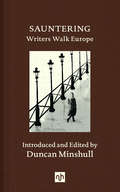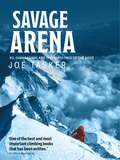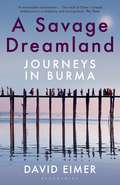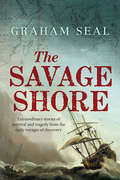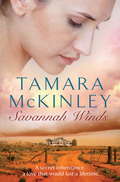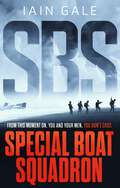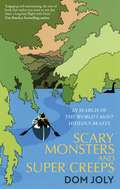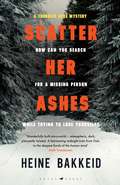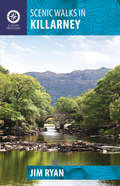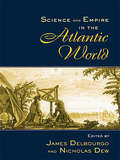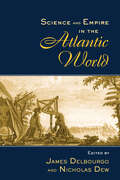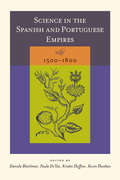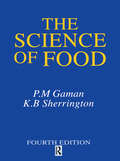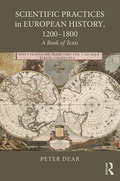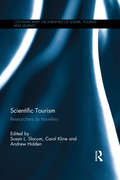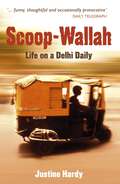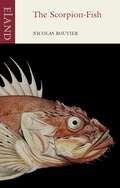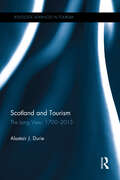- Table View
- List View
Saturn V Rocket (UEB Contracted)
This is an image of the Saturn V rocket: the type that carried American astronauts on the various Apollo missions to the moon in the 1960s and '70s. There is a locator dot shown, which will be at the top left of the page when the image is the right way up. The rocket is seen from the side moving diagonally from the bottom left of the page to the top right. It was 354 feet (108 metres) high and consisted of four stages, the last of which landed on the moon. At the bottom left of the page are the first stage rocket engine's exhaust gases pushing the vehicle through the atmosphere. Up and right from this are three of the five first stage engine outlets. Moving up and to the right are the rest of the rocket stages; they are marked by lines across the width of the launch vehicle. The fine textured section at the top right of the page is the spacecraft. This carried the astronauts and the lunar module, which travelled to and landed on the moon. The pointed section at the very top was the LES (launch escape system)
Saturn V Rocket (UEB Uncontracted)
This is an image of the Saturn V rocket: the type that carried American astronauts on the various Apollo missions to the moon in the 1960s and '70s. There is a locator dot shown, which will be at the top left of the page when the image is the right way up. The rocket is seen from the side moving diagonally from the bottom left of the page to the top right. It was 354 feet (108 metres) high and consisted of four stages, the last of which landed on the moon. At the bottom left of the page are the first stage rocket engine's exhaust gases pushing the vehicle through the atmosphere. Up and right from this are three of the five first stage engine outlets. Moving up and to the right are the rest of the rocket stages; they are marked by lines across the width of the launch vehicle. The fine textured section at the top right of the page is the spacecraft. This carried the astronauts and the lunar module, which travelled to and landed on the moon. The pointed section at the very top was the LES (launch escape system)
SAUNTERING: Writers Walk Europe
by Duncan MinshullSAUNTERING features sixty writers - classic and current - who travel Europe by foot. We join Henriette D'Angeville climbing Mont Blanc; Nellie Bly roaming the trenches of war-torn Poland; Werner Herzog on a personal pilgrimage across Germany; Hans Christian Andersen in quarantine; Joseph Conrad in Cracow; and Robert Macfarlane dropping deep into underground Paris.
Savage Arena: K2, Changabang and the North Face of the Eiger
by Joe TaskerI could never again maintain that I was caught up in this game unwillingly. I knew now what I wanted to do. Willingly would I accept the hardship and fear, the discipline and the sacrifices, if only I could be given back the chance to climb that mountain.' Joe Tasker lies, struck down by a tooth abscess, in a damp, bug-infested room in the Himalaya, wondering if he will be well enough to climb Dunagiri, his first venture to the 'big' mountains. He is there with Dick Renshaw to attempt to make a two-man ascent of the Peak - one of the first true Alpine-style expeditions to the Greater Ranges; an attempt that forms part of this tale of adventure in the savage vertical arena of hostile mountains. Joe Tasker was one of Britain's foremost mountaineers. A pioneer of lightweight mountaineering and a superbly gifted writer, in Savage Arena he vividly describes his participation in the first British winter ascent of the North Face of the Eiger; his first ascent of the West Wall of Changabang with Peter Boardman - considered to be a preposterous plan by the established climbing world; the first ascent of the North Ridge of Kangchenjunga; and his two unsuccessful attempts to climb K2, the second highest mountain in the world. This is a story of single-minded determination, strength and courage in a pursuit which owes much of its value and compulsion to the risks entailed - risks which often stimulate superlative performances. It is also a story of the stresses, strains and tensions of living in constant anxiety, often with only one other person, for long periods in which one is never far from moments of terror, and of the close and vital human relationships which spring from those circumstances. It is a moving, exciting and inspirational book about the adventuring spirit which seeks endless new climbing challenges to face, alluring problems to solve and difficulties to overcome, for it is not reaching the summit which is important, but the journey to it. Joe Tasker and Peter Boardman died on Everest in 1982, while attempting a new and unclimbed line. Both men were superb mountaineers and talented writers. Tasker's first book, Everest the Cruel Way, was first published in 1981. Savage Arena, his second book, was completed just before he left for Everest. Both books have become mountaineering classi. The literary legacy of Tasker and Boardman lives on through the Boardman Tasker Prize for Mountain Literature, established by family and friends in 1983 and presented annually to the author or co-authors of an original work which has made an outstanding contribution to mountain literature. For more information about the Boardman Tasker Prize, visit: www.boardmantasker.com 'The most riveting book on climbing that I have ever read.' Chris Bonington 'A gripping story of tremendous courage and unbelievable endurance.' Sir Edmund Hillary
A Savage Dreamland: Journeys in Burma
by David EimerThe first of its kind: an exploration of one of the most mysterious countries in the world, as told by one of the first outsiders to access the country in its entiretyFor almost fifty years Burma was ruled by a paranoid military dictatorship and isolated from the outside world. A historic 2015 election swept an Aung San Suu Kyi-led civilian government to power and was supposed to usher in a new golden era of democracy and progress, but Burma remains unstable and undeveloped, a little-understood country. Nothing is straightforward in this captivating land that is home to a combustible mix of races, religions and resources. A Savage Dreamland: Journeys in Burma reveals a country where temples take priority over infrastructure, fortune tellers thrive and golf courses are carved out of war zones. Setting out from Yangon, the old capital, David Eimer travels throughout this enigmatic nation, from the tropical south to the Burmese Himalayas in the far north, via the Buddhist-centric heartland and the jungles and mountains where rebel armies fight for autonomy in the longest-running civil wars in recent history. The story of modern Burma is told through the voices of the people Eimer encounters along the way: former political exiles, the squatters in Yangon's shanty towns, radical monks, Rohingya refugees, princesses and warlords, and the ethnic minorities clustered along the country's frontiers. In his vivid and revelatory account of life, history, culture and politics, David Eimer chronicles the awakening of a country as it returns to the global fold and explores a fractured nation, closed to foreigners for decades. Authoritative and ground-breaking, A Savage Dreamland: Journeys in Burma is set to be a modern classic of travel writing.
The Savage Shore: Extraordinary Stories of Survival and Tragedy from the Early Voyages of Discovery
by Graham SealFor centuries before the arrival in Australia of Captain Cook and the so-called First Fleet in 1788, intrepid seafaring explorers had been searching, with varied results, for the fabled “Great Southland.” In this enthralling history of early discovery, Graham Seal offers breathtaking tales of shipwrecks, perilous landings, and Aboriginal encounters with the more than three hundred Europeans who washed up on these distant shores long before the land was claimed by Cook for England. The author relates dramatic, previously untold legends of survival gleaned from the centuries of Dutch, Spanish, Portuguese, French, and Indonesian voyages to Australia, and debunks commonly held misconceptions about the earliest European settlements: ships of the Dutch East Indies Company were already active in the region by the early seventeenth century, and the Dutch, rather than the English, were probably the first European settlers on the continent.
Savannah Winds
by Tamara McKinleyWhen Fleur receives word of a surprise inheritance from an aunt she never knew, it couldn't come at a more opportune moment. Her relationship is crumbling, and she's caught in the middle of a serious family rift. Consulting her aunt's long-lost diary, Fleur sets out on a voyage of historical discovery up the coast and through the Gulf Country, to the isolated cattle ranch Savannah Winds. But unbeknownst to Fleur, what she uncovers there could have devastating repercussions for her own life. Set between the 1930s and the modern day, Savannah Winds is an exploration of family ties, bitter rivalry and the strength of enduring love.
SBS: Special Boat Squadron
by Iain GaleA historical adventure chronicling the exploits of the Special Boat Squadron, the seaborne raiders who, by strength and guile, carried out World War Two's most daring covert operations.From this moment on, you and your men, you don't exist. Formed in the darkest hours of the Second World War, as nation after nation fell before the unstoppable Axis advance, the task of the SBS was to strike back at an enemy no army could meet in the field. Trained in sabotage and surveillance, the Special Boat Squadron raided deep behind enemy lines, sowing chaos and capturing much-needed intelligence. Soldiers, adventurers and rogues, their methods were unorthodox, their success rate unprecedented.Operation Anglo, 31 August 1942.Beneath the waves of the Mediterranean, HMS Traveller closes in on the coast of Rhodes. Aboard, eight SBS commandos check their weapons as they prepare to infiltrate and sabotage two Axis bomber fields. Only two of the eight commandos will make it back to alive. Ex-Black Watch Sgt Jim Hunter will be one of the lucky ones, but what he will face next will make Operation Anglo look like a cakewalk.Reviewers on Iain Gale:'A fast fit fighting yarn that transports you to the deadly hillsides of wartime Crete.' Quentin Letts on SBS 'A powerful novel of men at war. A triumph.' Bernard Cornwell on Four Days in June 'Very exciting.' Daily Telegraph on the Jack Steele series
Scary Monsters and Super Creeps: In Search of the World's Most Hideous Beasts
by Dom JolyDom Joly sets off round the world, but this time he's not looking to holiday in a danger zone - he's monster hunting. Ever since he was given a copy of Arthur C. Clarke's Mysterious World for his ninth birthday Dom has been obsessed with the world of cryptozoology - monster hunting - and in Scary Monsters and Super Creeps he heads to six completely different destinations to investigate local monster sightings. He explores the Redwood Curtain in northern California in search of Sasquatch; in Canada he visits Lake Okanagan hoping to catch a glimpse of a thirty-foot snake-like creature called Ogopogo; and near Lake Tele in Congo he risks his life tracking the vegetarian sauropod Mokele-mbembe. Naturally he heads to Loch Ness - but for this hunt he has his family in tow; he treks across the Khumbu Valley in Nepal looking for Yeti; and in the hills above Hiroshima in Japan he enlists the help of a local man to find the Hibagon, a terribly smelly 'caveman ape'. Are the monsters all the product of fevered minds, or is there a sliver of truth somewhere in the madness? Either way, the search gives Dom an excuse to dive into six fascinating destinations on a gloriously nutty adventure. In typically hilarious and irreverent fashion, Dom explores the cultures that gave rise to these monster myths and ends up in some pretty hairy situations with people even stranger than the monsters they are hunting.
Scatter Her Ashes (A Thorkild Aske Mystery)
by Heine BakkeidCreepy, atmospheric and darkly comic – C. J. TudorBakkeid is already big and his work is only going to get bigger and better – Daily RecordDisgraced, damaged former police officer Thorkild Aske has stopped taking his painkillers after his last experience searching for the missing in northern Norway. Wracked by withdrawal and desperate for work, he reluctantly agrees to investigate the disappearance of two schoolgirls for bestselling crime writer Milla Lind – but he soon discovers that Lind's interest in the case is not, as she claims, simply research for her latest novel.When Thorkild discovers that her previous investigator was murdered on the job, no-one will explain why – all he has to go on are files about unrelated cases from all across Norway. Oh, and his ex-wife wants to talk. What could possibly go wrong?Praise for the Thorkild Aske series:'Stephen King has got himself a Norwegian crime heir' - Ekstra Bladet'Wonderfully creepy' - Daily Mail'A gripping, atmospheric novel and a first outing for Aske. More are promised – I can't wait' - Saga'At a stroke, Bakkeid has entered the upper echelons of Norwegian crime writing' - Barry Forshaw
Scenic Walks in Killarney: A Walking Guide (A Walking Guide)
by Jim RyanNowhere in Ireland is there such a rich diversity of walks as Killarney. Thousands visit every year to walk in the beautiful landscape for which Killarney is renowned, and until now there has been no guidebook for these walks. Jim Ryan has compiled eighteen of Killarney’s most interesting low level walks, providing excellent photographs, precise directions and the length, time and level of difficulty of each. Each walk has a map indicating the important features. Walks vary in duration from an hour to a day, from fl at walking to more challenging rambles. Jim takes readers through the town of Killarney, out to Muckross and Torc, down to Ross Island, and on peaceful strolls in the countryside. One walk includes a boat trip through Killarney’s lakes. Woven into the route descriptions are historical notes, anecdotes, folklore and natural history to add to the walker’s enjoyment. This is a book to be used and reused, for the visitor to Killarney, having savoured its beauty, invariably returns. • Clear concise full-colour presentation in an easy-to-use, practical format • Author’s enthusiasm and knowledge lends authority to commentaries and route selection. • Also by Jim Ryan: Carrauntoohil & MacGillycuddy’s Reeks – A Walking Guide •
Science and Empire in the Atlantic World (New Directions in American History)
by James Delbourgo Nicholas DewScience and Empire in the Atlantic World is the first book in the growing field of Atlantic Studies to examine the production of scientific knowledge in the Atlantic world from a comparative and international perspective. Rather than focusing on a specific scientific field or single national context, this collection captures the multiplicity of practices, people, languages, and agendas that characterized the traffic in knowledge around the Atlantic world, linking this knowledge to the social processes fundamental to colonialism, such as travel, trade, ethnography, and slavery.
Science and Empire in the Atlantic World (New Directions in American History)
by James Delbourgo Nicholas DewScience and Empire in the Atlantic World is the first book in the growing field of Atlantic Studies to examine the production of scientific knowledge in the Atlantic world from a comparative and international perspective. Rather than focusing on a specific scientific field or single national context, this collection captures the multiplicity of practices, people, languages, and agendas that characterized the traffic in knowledge around the Atlantic world, linking this knowledge to the social processes fundamental to colonialism, such as travel, trade, ethnography, and slavery.
Science in the Spanish and Portuguese Empires, 1500–1800
by Daniela Bleichmar Paula De Vos Kristin Huffine Kevin SheehanThis collection of essays is the first book published in English to provide a thorough survey of the practices of science in the Spanish and Portuguese empires from 1500 to 1800. Authored by an interdisciplinary team of specialists from the United States, Latin America, and Europe, the book consists of fifteen original essays, as well as an introduction and an afterword by renowned scholars in the field. The topics discussed include navigation, exploration, cartography, natural sciences, technology, and medicine. This volume is aimed at both specialists and non-specialists, and is designed to be useful for teaching. It will be a major resource for anyone interested in colonial Latin America.
Science of Food
by K. B. Sherrington P. M. GamanFirst Published in 1998. Routledge is an imprint of Taylor & Francis, an informa company.
Science of Food: An Introduction To Food Science, Nutrition And Microbiology
by K. B. Sherrington P. M. GamanFirst Published in 1998. Routledge is an imprint of Taylor & Francis, an informa company.
Scientific Practices in European History, 1200-1800: A Book of Texts
by Peter DearScientific Practices in European History, 1200–1800 presents and situates a collection of extracts from both widely known texts by such figures as Copernicus, Newton, and Lavoisier, and lesser known but significant items, all chosen to provide a perspective on topics in social, cultural and intellectual history and to illuminate the concerns of the early modern period. The selection of extracts highlights the emerging technical preoccupations of this period, while the accompanying introductions and annotations make these occasionally complex works accessible to students and non-specialists. The book follows a largely chronological sequence and helps to locate scientific ideas and practices within broader European history. The primary source materials in this collection stand alone as texts in themselves, but in illustrating the scientific components of early modern societies they also make this book ideal for teachers and students of European history.
Scientific Practices in European History, 1200-1800: A Book of Texts
by Peter DearScientific Practices in European History, 1200–1800 presents and situates a collection of extracts from both widely known texts by such figures as Copernicus, Newton, and Lavoisier, and lesser known but significant items, all chosen to provide a perspective on topics in social, cultural and intellectual history and to illuminate the concerns of the early modern period. The selection of extracts highlights the emerging technical preoccupations of this period, while the accompanying introductions and annotations make these occasionally complex works accessible to students and non-specialists. The book follows a largely chronological sequence and helps to locate scientific ideas and practices within broader European history. The primary source materials in this collection stand alone as texts in themselves, but in illustrating the scientific components of early modern societies they also make this book ideal for teachers and students of European history.
Scientific Tourism: Researchers as Travellers (Contemporary Geographies of Leisure, Tourism and Mobility)
by Susan Slocum Carol Kline Andrew HoldenAs researchers in emerging economies, scientists are often the first foreign visitors to stay in remote rural areas and, on occasion, form joint venture ecotourism and community tourism projects or poverty alleviation schemes between local agencies or NGOs, the local community, and their home institution or agency. They therefore can contribute to avenues for the conservation of natural resources and the development of rural communities as well as influencing the future tourism development through its perceived legitimacy and the destination image it promotes. This book for the first time critically reviews tourism debates surrounding this emerging market of scientific and research oriented tourism. It is divided into three inter-related sections. Section 1 sets the stage of the discourse of scientific research in tourism; Section 2 evaluates the key players of scientific tourism looking particularly at the roles of NGOs, government agencies and university academic staff and Section 3 contains case studies documenting the niche of researchers as travelers in a range of geographical locations including Tanzania, Australia, Chile, Peru and Mexico. The title’s multidisciplinary approach provides an informed, interesting and stimulating addition to the existing limited literature and raises many issues and associated questions including the role of science tourism in tourism development and expansion, the impacts of scientific and research-based tourism, travel behaviors and motivations of researchers to name but a few. This significant volume will provide the reader with a better understanding of scientists as travelers, their relationship to the tourism industry, and the role they play in community development around tourism sites. It will be valuable reading for students and academics across the fields of Tourism, Geography and Development Studies as well as other social science disciplines.
Scientific Tourism: Researchers as Travellers (Contemporary Geographies of Leisure, Tourism and Mobility)
by Susan L. Slocum Carol Kline Andrew HoldenAs researchers in emerging economies, scientists are often the first foreign visitors to stay in remote rural areas and, on occasion, form joint venture ecotourism and community tourism projects or poverty alleviation schemes between local agencies or NGOs, the local community, and their home institution or agency. They therefore can contribute to avenues for the conservation of natural resources and the development of rural communities as well as influencing the future tourism development through its perceived legitimacy and the destination image it promotes. This book for the first time critically reviews tourism debates surrounding this emerging market of scientific and research oriented tourism. It is divided into three inter-related sections. Section 1 sets the stage of the discourse of scientific research in tourism; Section 2 evaluates the key players of scientific tourism looking particularly at the roles of NGOs, government agencies and university academic staff and Section 3 contains case studies documenting the niche of researchers as travelers in a range of geographical locations including Tanzania, Australia, Chile, Peru and Mexico. The title’s multidisciplinary approach provides an informed, interesting and stimulating addition to the existing limited literature and raises many issues and associated questions including the role of science tourism in tourism development and expansion, the impacts of scientific and research-based tourism, travel behaviors and motivations of researchers to name but a few. This significant volume will provide the reader with a better understanding of scientists as travelers, their relationship to the tourism industry, and the role they play in community development around tourism sites. It will be valuable reading for students and academics across the fields of Tourism, Geography and Development Studies as well as other social science disciplines.
Scoop-Wallah: Life on a Delhi Daily
by Justine HardyA chance conversation with her greengrocer about the media’s portrayal of India inspired journalist Justine Hardy to leave London and, following in the footsteps of Rudyard Kipling, spend a year working at The Indian Express in New Delhi. Her new life takes her all over India from polo matches and Assam tea gardens to city slums.
The Scorpion-Fish
by Nicolas BouvierOn an unamed Island that can only be Ceylon, the traveller checks into his 117th rented room, abandoned by his lover, poor and feverish. A book on Indian insects deepens his morbid fascination with the crawling inhabitants of the room-'a pretty world of killers'- barely distinguishable from the insect like habitues of the local cafe, the charlatans and fake exorcists, the indolent landowners, merchants and priests. In this exhausted state, he grows antennae that are 'tensed between the real and the occult'. The distinction between fact and fiction is blurred, but in this world of the imagination truths are sometimes crystal clear. A long-dead, levitating priest and the beautiful but deadly scorpion-fish, symbol of Bouvier's ambivalent relationship with the Island, are but two of the specters which eventually lose their hold on the author, releasing him back to life. It is a classic tale of the mental breakdown of a western traveller in the feverish heat of the tropical East - but which yet offers precious insights into the world and the self.
Scotland and Tourism: The Long View, 1700–2015 (Routledge Advances in Tourism)
by Alastair J. DurieTourism has long been important to Scotland. It has become all the more significant as the financial sector has faltered and other mainstays are in apparent long-term decline. Yet there is no assessment of this industry and its place over the long run, no one account of what it has meant to previous generations and continues to mean to the present one, of what led to growth or what indeed has led people of late to look elsewhere. This book brings together work from many periods and perspectives. It draws on a wide range of source material, academic and non-academic, from local studies and general analyses, visitors’ accounts, hotel records, newspaper and journal commentaries, photographs and even cartoons. It reviews arguments over the cultural and economic impact of tourism, and retrieves the experience of the visited, of the host communities as well as the visitors. It questions some of the orthodoxies – that Scott made Scott-land, or that it was charter air flights that pulled the rug from under the mass market – and sheds light on what in the Scottish package appealed, and what did not, and to whom; how provision changed, or failed to change; and what marketing strategies may have achieved. It charts changes in accommodation, from inn to hotel, holiday camp, caravanning and timeshare. The role of transport is a central feature: that of the steamship and the railway in opening up Scotland, and later of motor transport in reshaping patterns of holidaymaking. Throughout there is an emphasis on the comparative: asking what was distinctive about the forms and nature of tourism in Scotland as against competing destinations elsewhere in the UK and Europe. It concludes by reflecting on whether Scotland's past can inform the making and shaping of tourism policy and what cautions history might offer for the future. This prolific long-term analysis of tourism in Scotland is a must-read for all those interested in tourism history.
Scotland and Tourism: The Long View, 1700–2015 (Routledge Advances in Tourism)
by Alastair J. DurieTourism has long been important to Scotland. It has become all the more significant as the financial sector has faltered and other mainstays are in apparent long-term decline. Yet there is no assessment of this industry and its place over the long run, no one account of what it has meant to previous generations and continues to mean to the present one, of what led to growth or what indeed has led people of late to look elsewhere. This book brings together work from many periods and perspectives. It draws on a wide range of source material, academic and non-academic, from local studies and general analyses, visitors’ accounts, hotel records, newspaper and journal commentaries, photographs and even cartoons. It reviews arguments over the cultural and economic impact of tourism, and retrieves the experience of the visited, of the host communities as well as the visitors. It questions some of the orthodoxies – that Scott made Scott-land, or that it was charter air flights that pulled the rug from under the mass market – and sheds light on what in the Scottish package appealed, and what did not, and to whom; how provision changed, or failed to change; and what marketing strategies may have achieved. It charts changes in accommodation, from inn to hotel, holiday camp, caravanning and timeshare. The role of transport is a central feature: that of the steamship and the railway in opening up Scotland, and later of motor transport in reshaping patterns of holidaymaking. Throughout there is an emphasis on the comparative: asking what was distinctive about the forms and nature of tourism in Scotland as against competing destinations elsewhere in the UK and Europe. It concludes by reflecting on whether Scotland's past can inform the making and shaping of tourism policy and what cautions history might offer for the future. This prolific long-term analysis of tourism in Scotland is a must-read for all those interested in tourism history.

